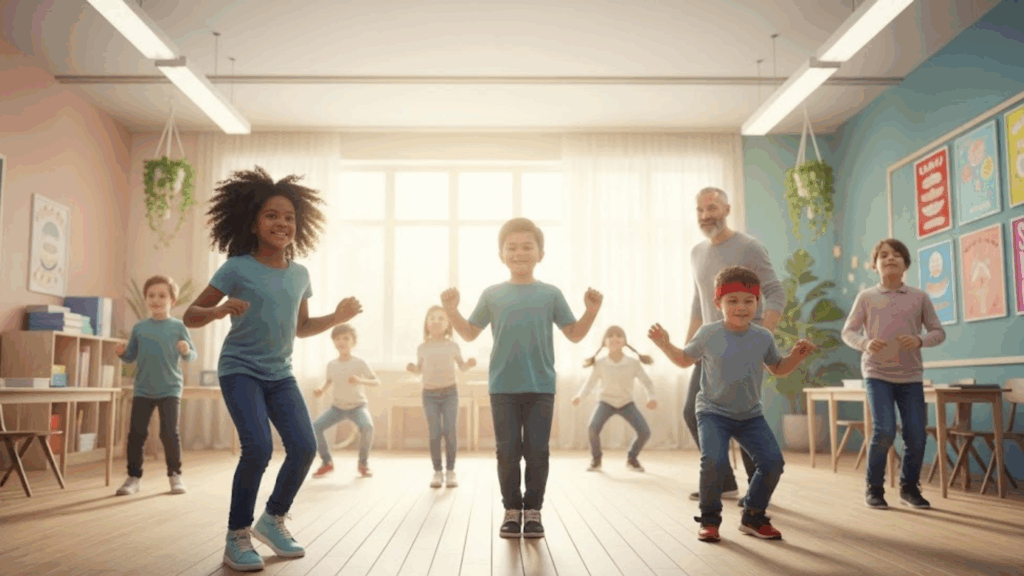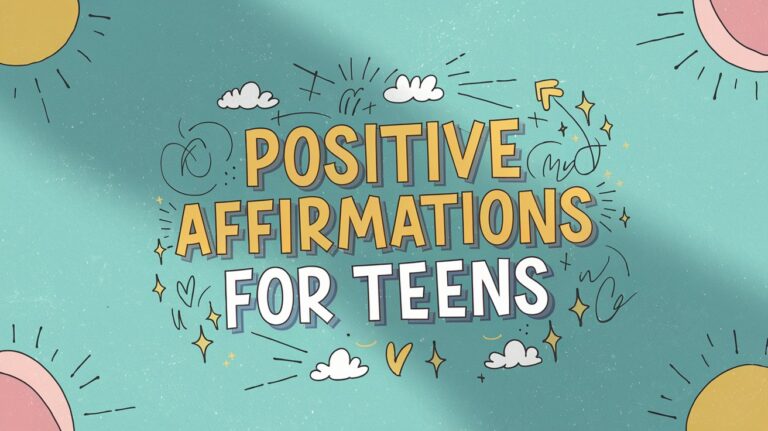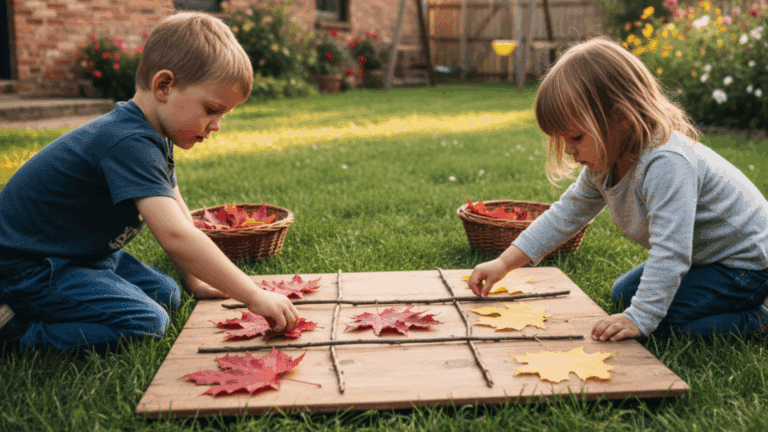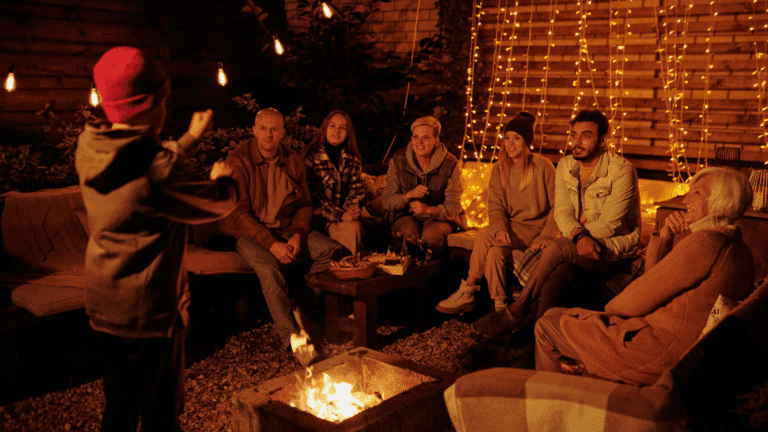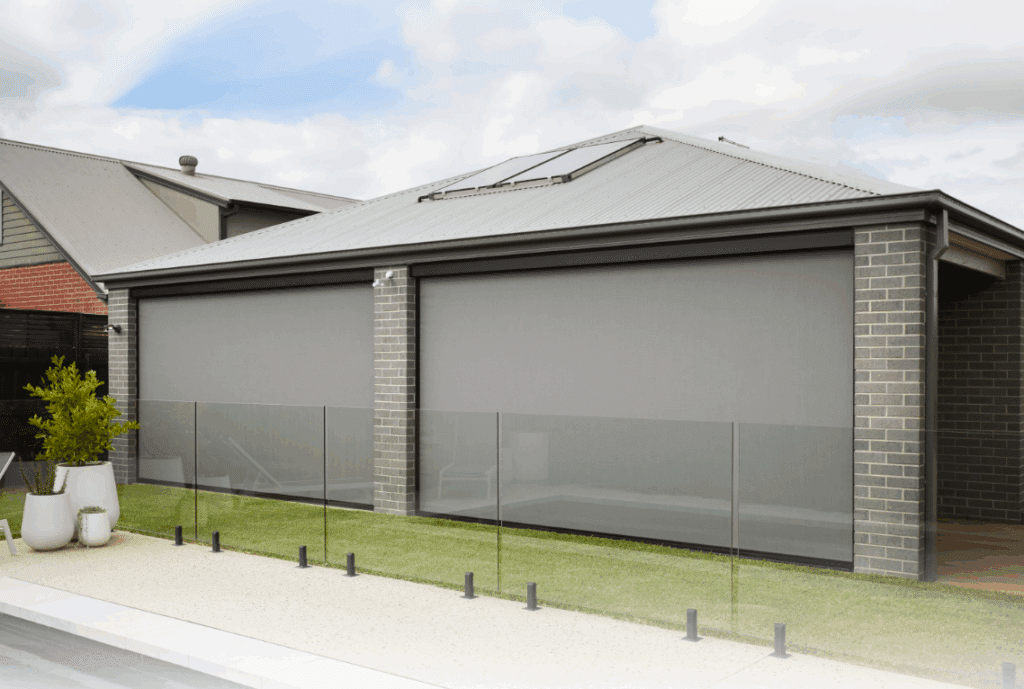Ever notice how your mind starts wandering after staring at the same task for too long? Your brain’s waving a white flag, begging for a breather.
Most of us push through that mental fog instead of listening to what our brains need. We often think that taking breaks means we’re being lazy, but science suggests otherwise.
That’s where quick brain breaks come in. These simple minute activities can completely reset your focus and energy levels.
You don’t need special equipment or a gym membership to make them work.
Why Kids Need Brain Breaks More Than Ever?
Children today face unprecedented cognitive demands from longer school days, academic pressure, and constant digital stimulation. Their developing brains are working overtime in ways previous generations didn’t experience.
Brain breaks aren’t wasted time; they’re when crucial learning happens.
During pauses, the brain consolidates information and resets attention systems. Elementary-aged children can maintain focused attention for only 10-15 minutes, while teenagers can manage 20-25 minutes.
These breaks help develop self-regulation skills, enabling children to recognize their cognitive limits and manage stress effectively.
Physical movement during breaks increases blood flow to the brain and releases mood-boosting neurotransmitters.
Super-Quick Brain Break Activities for Kids
When kids start to lose focus or get restless, a short reset can work wonders.
These quick brain breaks are easy, low-prep activities that take just a minute or two but help recharge energy, improve attention, and bring fun back into learning.
1. Animal Walks
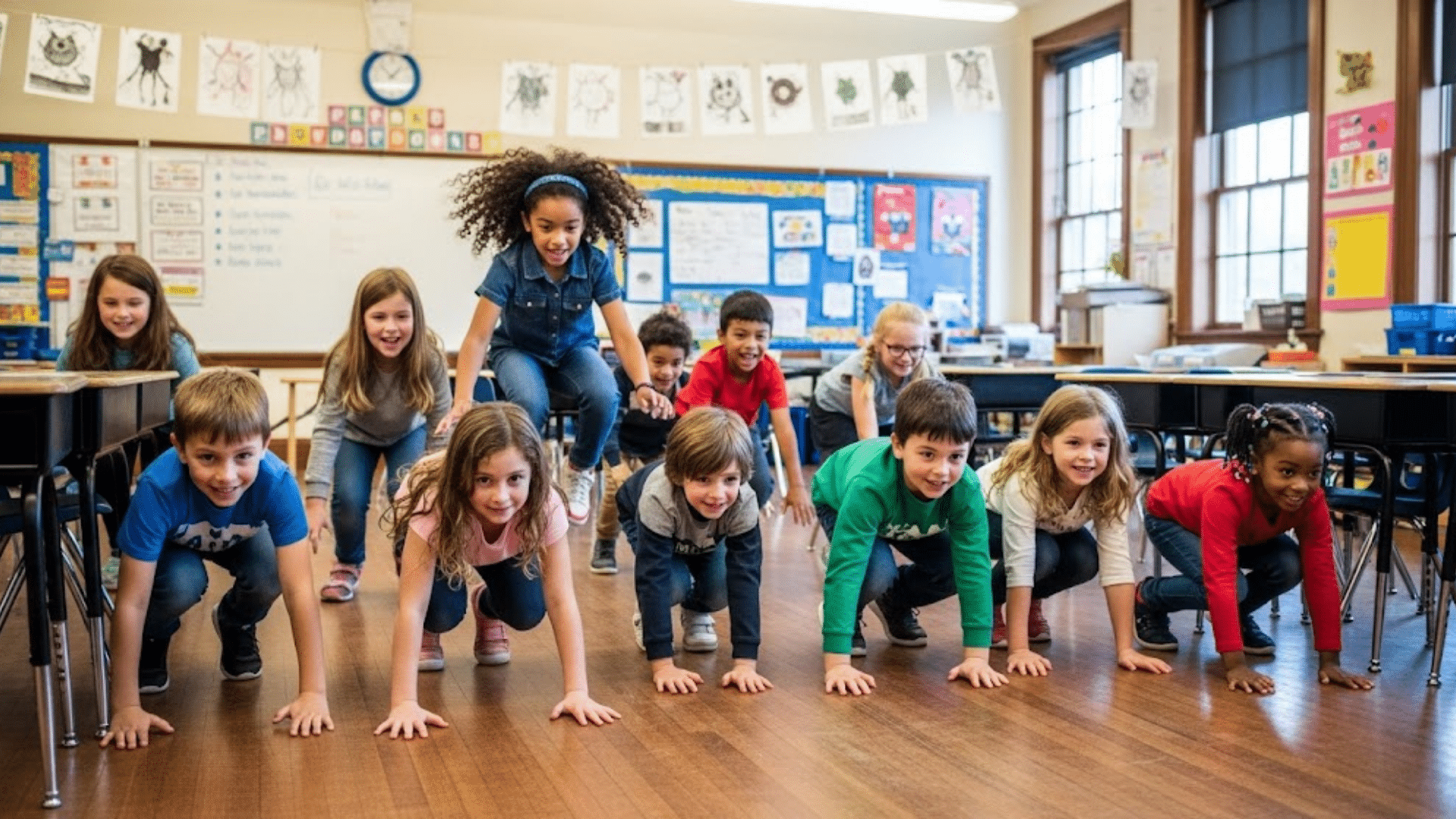
Kids love pretending to be animals, and it channels their energy into imaginative movement. It boosts coordination, balance, and creativity.
- How to do it: Ask kids to move like animals (e.g., crab walk, bear crawl, frog jump). Call out a new animal every 30 seconds, or let kids choose.
- Why it works: It combines physical movement with pretend play, keeping both the body and the brain engaged.
- Scientific Benefit: Targets gross motor skills, spatial awareness, and bilateral coordination, which are essential for brain-body integration and motor planning.
2. Freeze Dance
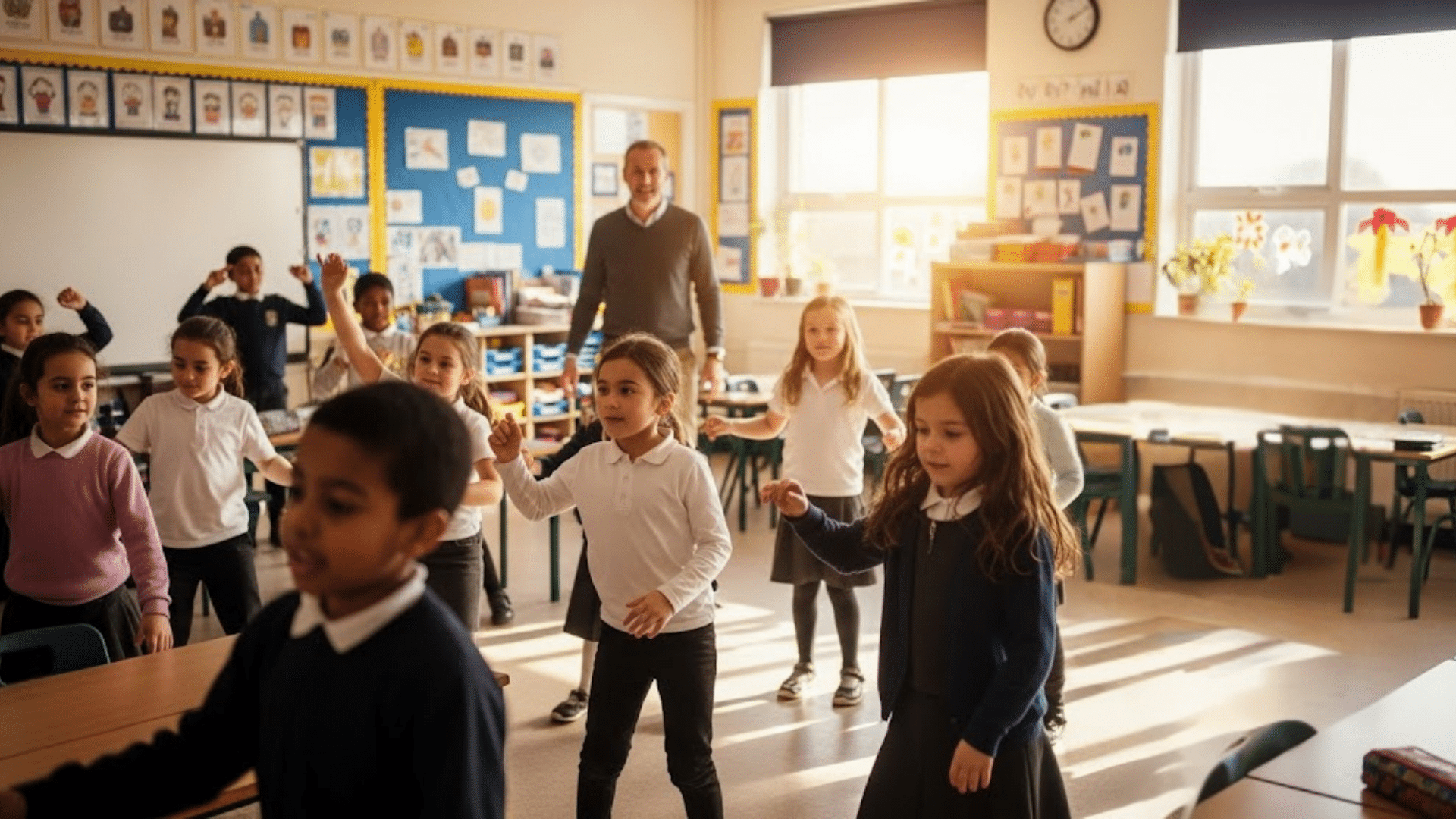
A fast-paced favorite that mixes physical activity with self-regulation skills. Great for getting wiggles out in a fun and safe way.
- How to do it: Play upbeat music. When the music stops, kids must freeze in place. Resume and repeat.
- Why it works: Kids practice impulse control while dancing off excess energy.
- Scientific Benefit: Strengthens executive function, particularly inhibitory control and emotional regulation, while stimulating the vestibular system.
3. Yoga Stretch Circle
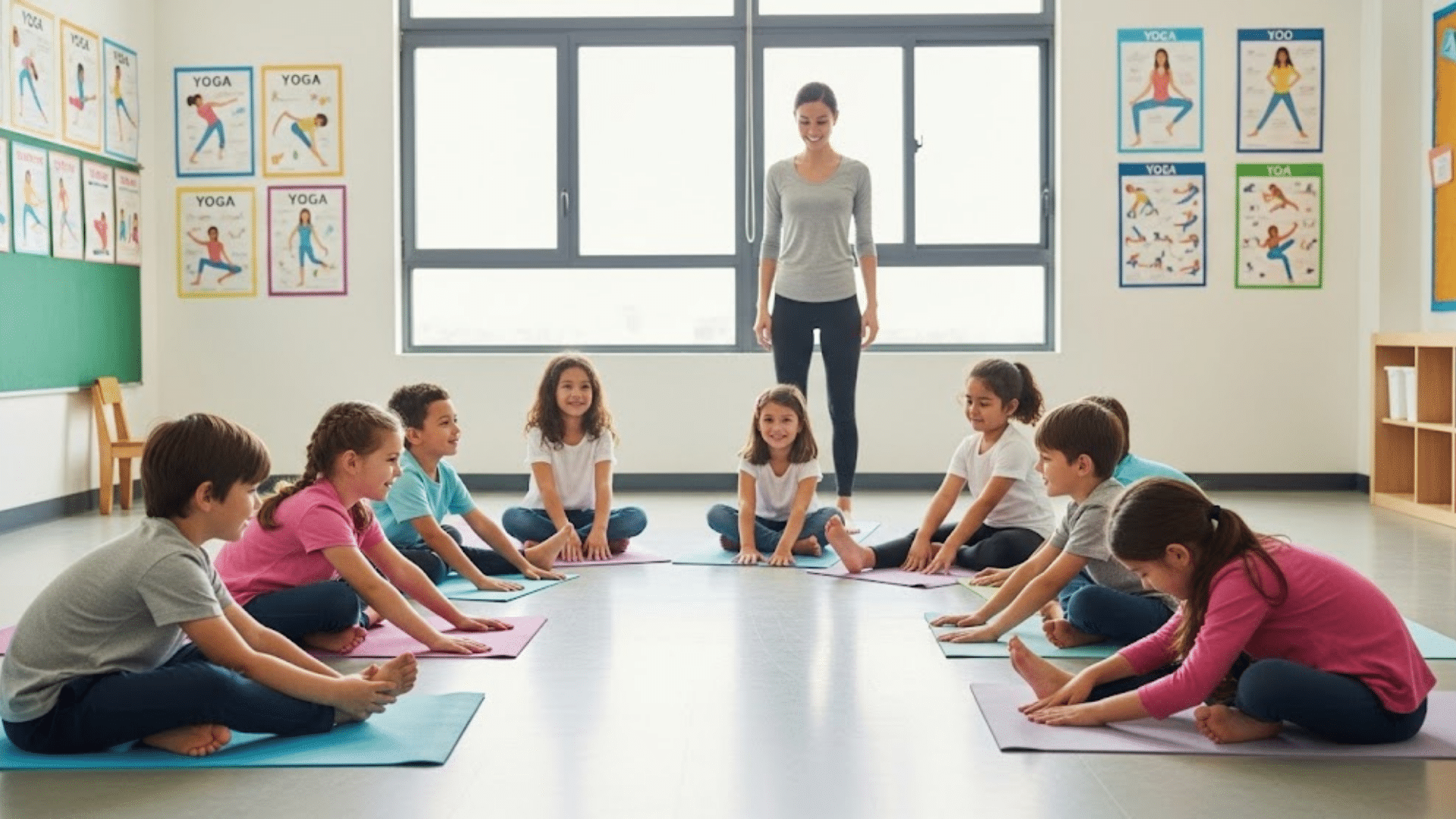
This calm and centered brain break is ideal after high-energy play or during a prolonged period of sitting. It builds body awareness and mindfulness.
- How to do it: Stand in a circle. Each student takes a turn leading a simple yoga pose, such as “tree” or “warrior.” Hold each pose for 10–20 seconds.
- Why it works: Encourages self-regulation, deep breathing, and flexibility.
- Scientific Benefit: Activates the parasympathetic nervous system, reducing stress and enhancing interoception and focus.
4. Balloon Keep-Up
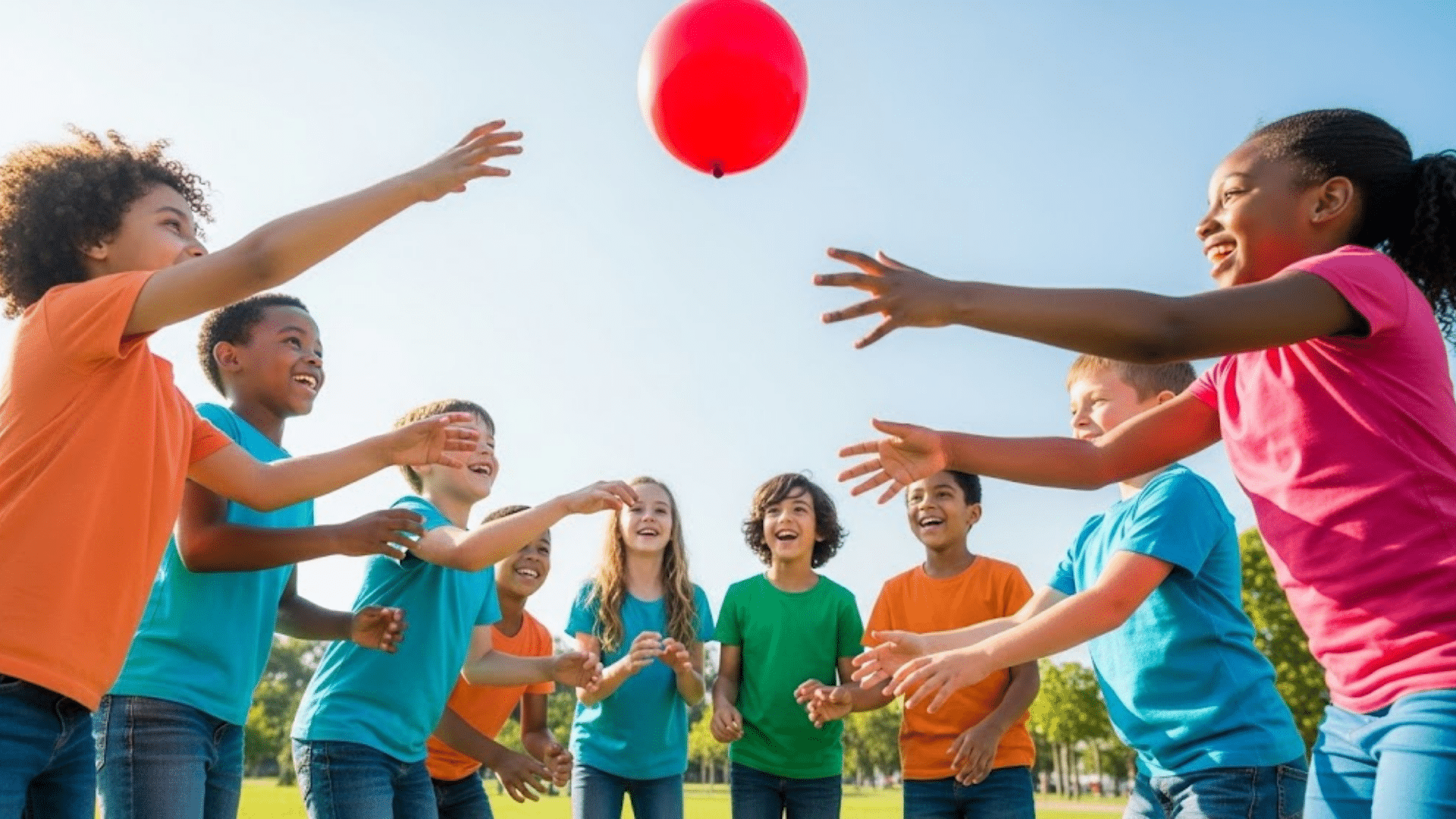
This game turns a simple object into a high-energy challenge. It’s ideal for indoor group fun with minimal space or setup requirements.
- How to do it: Toss a balloon into the air and challenge the group to keep it from touching the floor. Add more balloons to increase difficulty.
- Why it works: Improves coordination, encourages teamwork, and breaks mental fatigue.
- Scientific Benefit: Boosts hand-eye coordination, reaction time, and team-based problem-solving, all tied to cognitive agility.
5. Simon Says (with a twist!)
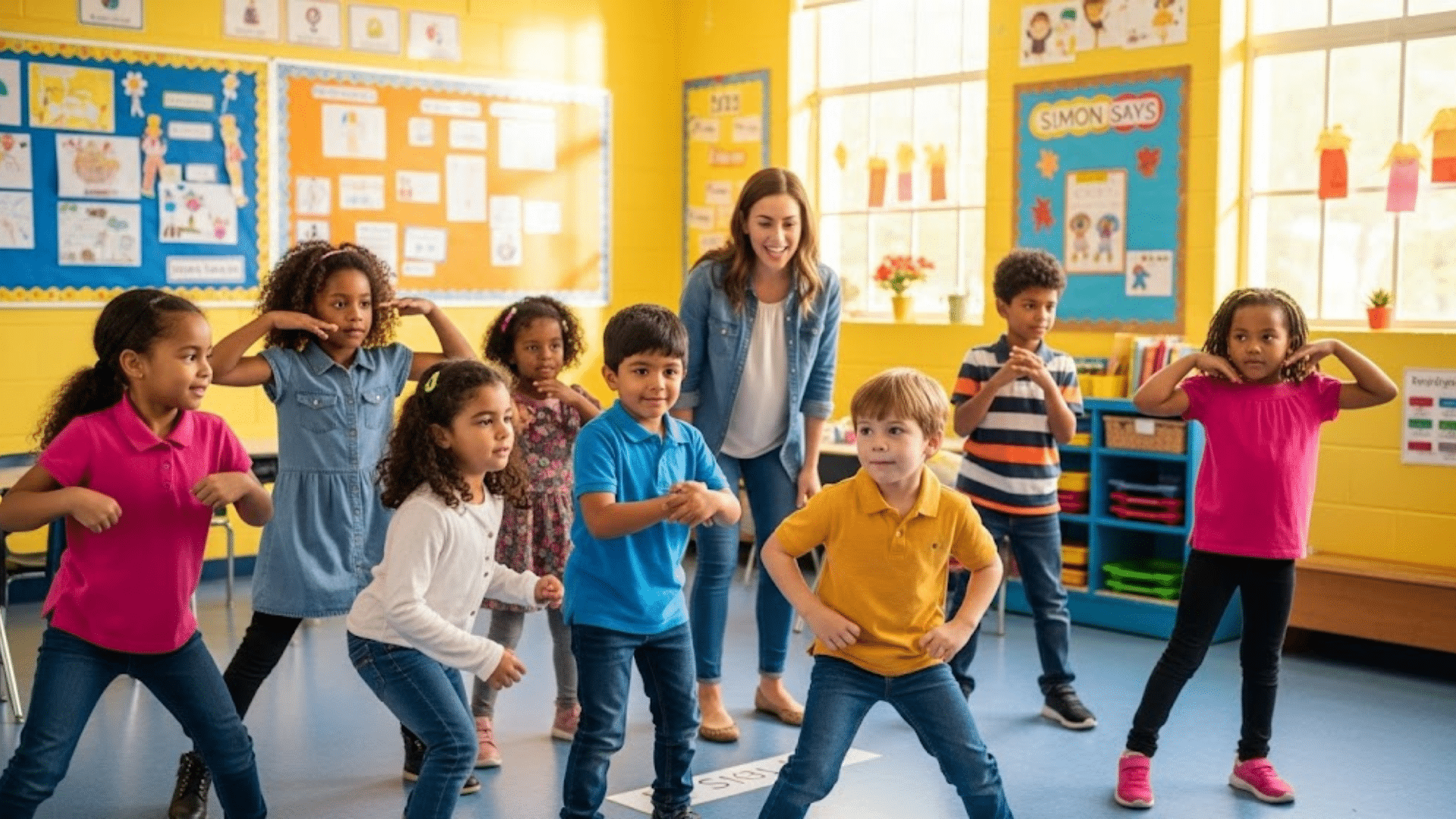
Classic game with endless variations. Keeps kids listening carefully and thinking quickly while moving their bodies.
- How to do it: Play “Simon Says” but add themed movements like, “Simon says pretend to eat spaghetti” or “do a math pose.”
- Why it works: Sharpens listening skills while encouraging physical and mental engagement.
- Scientific Benefit: Amplifies working memory, auditory processing, and inhibitory control (a key executive function).
6. 5-4-3-2-1 Grounding Game
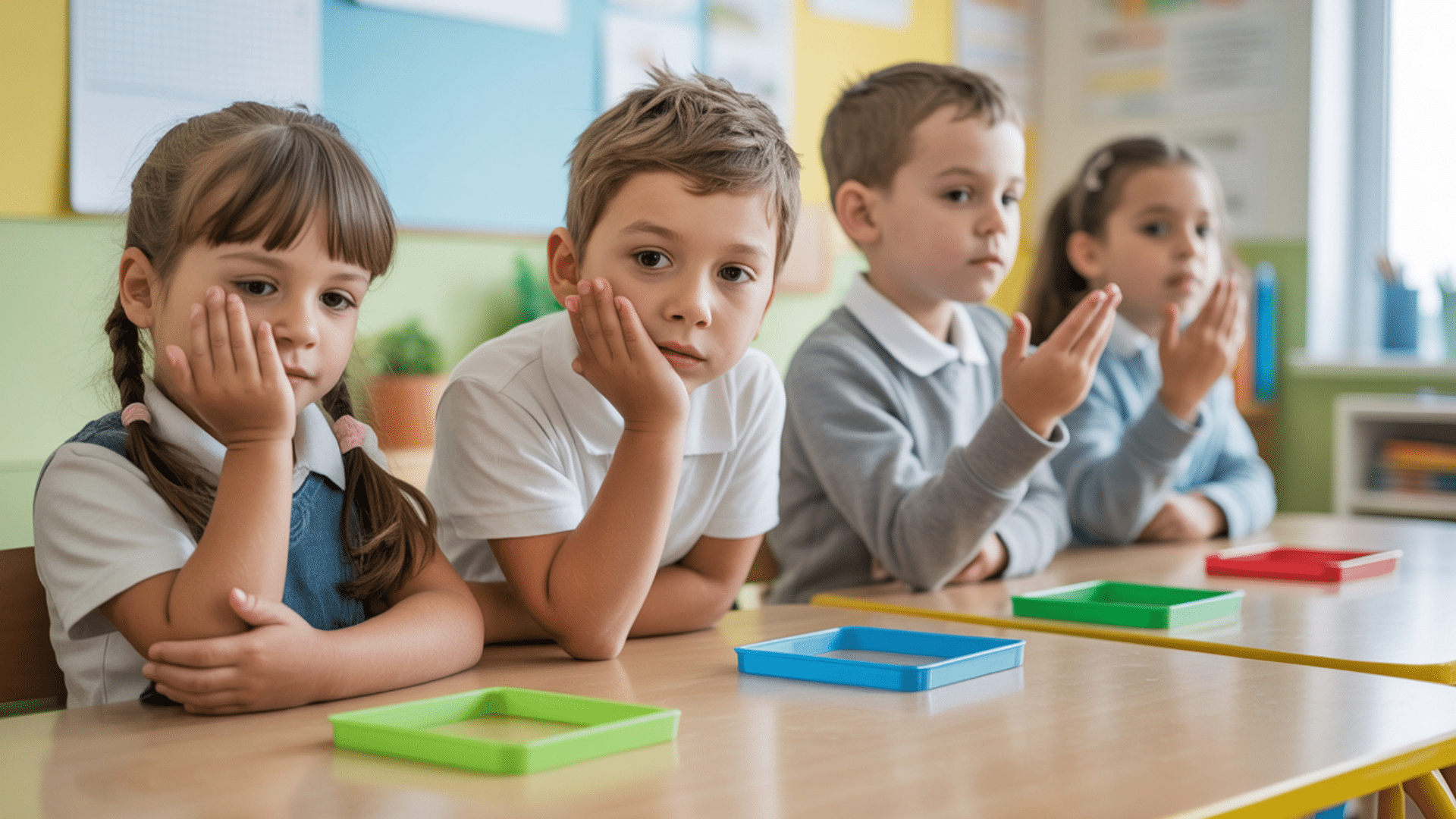
This sensory mindfulness activity helps calm overstimulated kids or ease transitions. It brings attention back to the present moment.
- How to do it: Ask them to name 5 things they see, 4 they can touch, 3 they hear, 2 they smell, and 1 they taste or like.
- Why it works: Reduces anxiety and supports emotional regulation by grounding kids through their senses.
- Scientific Benefit: Activates sensory integration, mindfulness, and prefrontal cortex regulation, which help manage stress and improve emotional balance.
7. Would You Rather (Move to Choose)
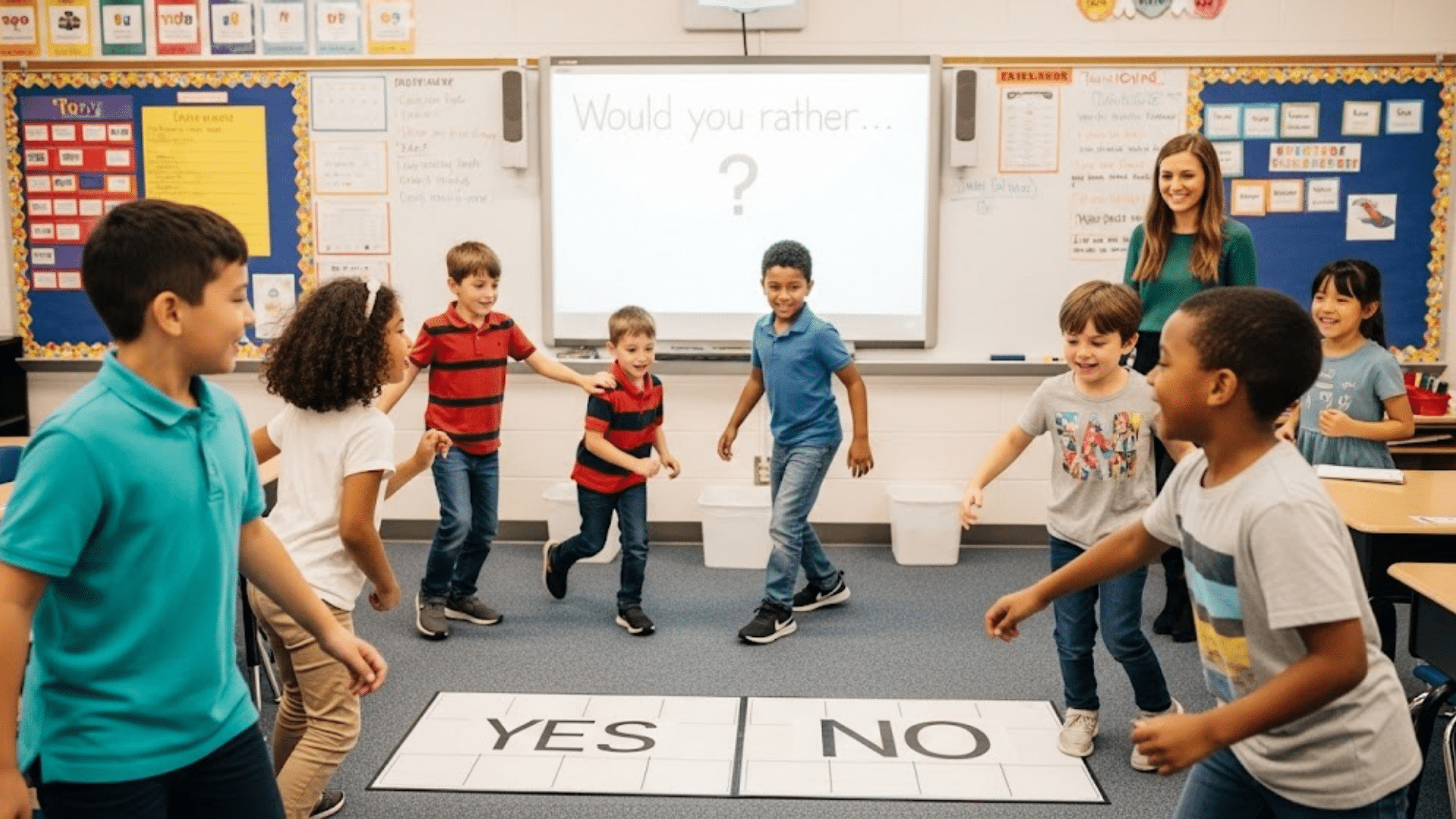
This game makes decision-making physical. It’s interactive and gets kids moving while helping them learn about each other.
- How to do it: Pose a question like “Would you rather fly (flap arms) or swim (pretend swim)?” Kids act out their choices.
- Why it works: Fosters creativity, movement, and connection in one quick burst.
- Scientific Benefit: Encourages choice-based thinking, boosts motor planning, and promotes social-emotional learning through shared play.
8. Mirror Me

A simple game that focuses attention and builds empathy through non-verbal communication.
- How to do it: One student or the teacher makes slow, exaggerated movements. Others must mirror them exactly. Switch leaders every 1–2 minutes.
- Why it works: Amplifies focus, coordination, and social-emotional learning.
- Scientific Benefit: Develops mirror neuron systems, supports attentional control, and improves non-verbal communication and empathy.
9. Paper Airplane Races
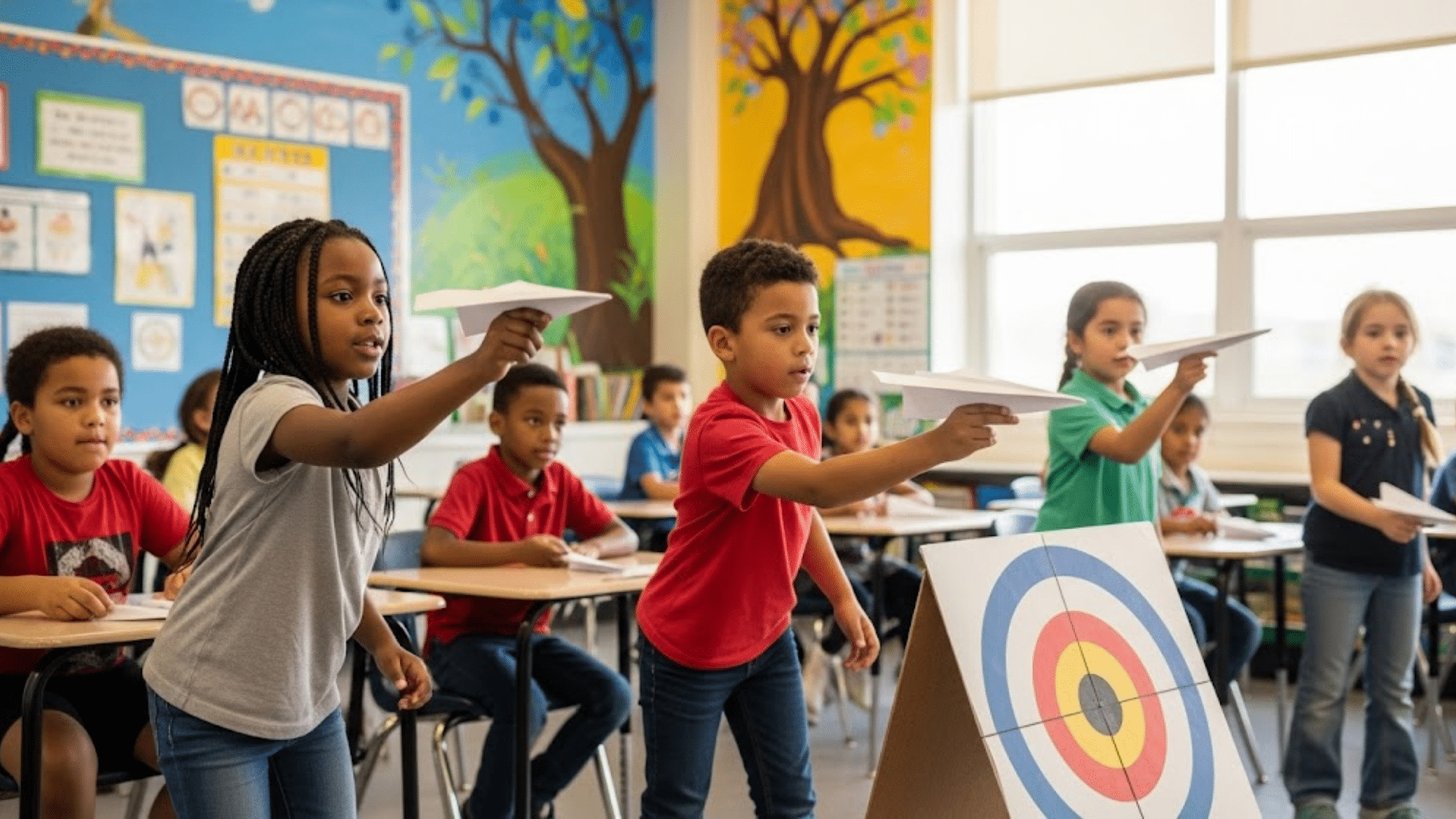
Part play, part STEM challenge. This activity can be quick or extended with design iterations.
- How to do it: Let kids create and decorate paper airplanes. Race them across the room or compare flight distances.
- Why it works: Encourages creativity, fine motor skills, and fundamental physics concepts.
- Scientific Benefit: Supports fine motor development, introduces cause-and-effect learning, and encourages spatial-temporal reasoning.
10. Dance Charades
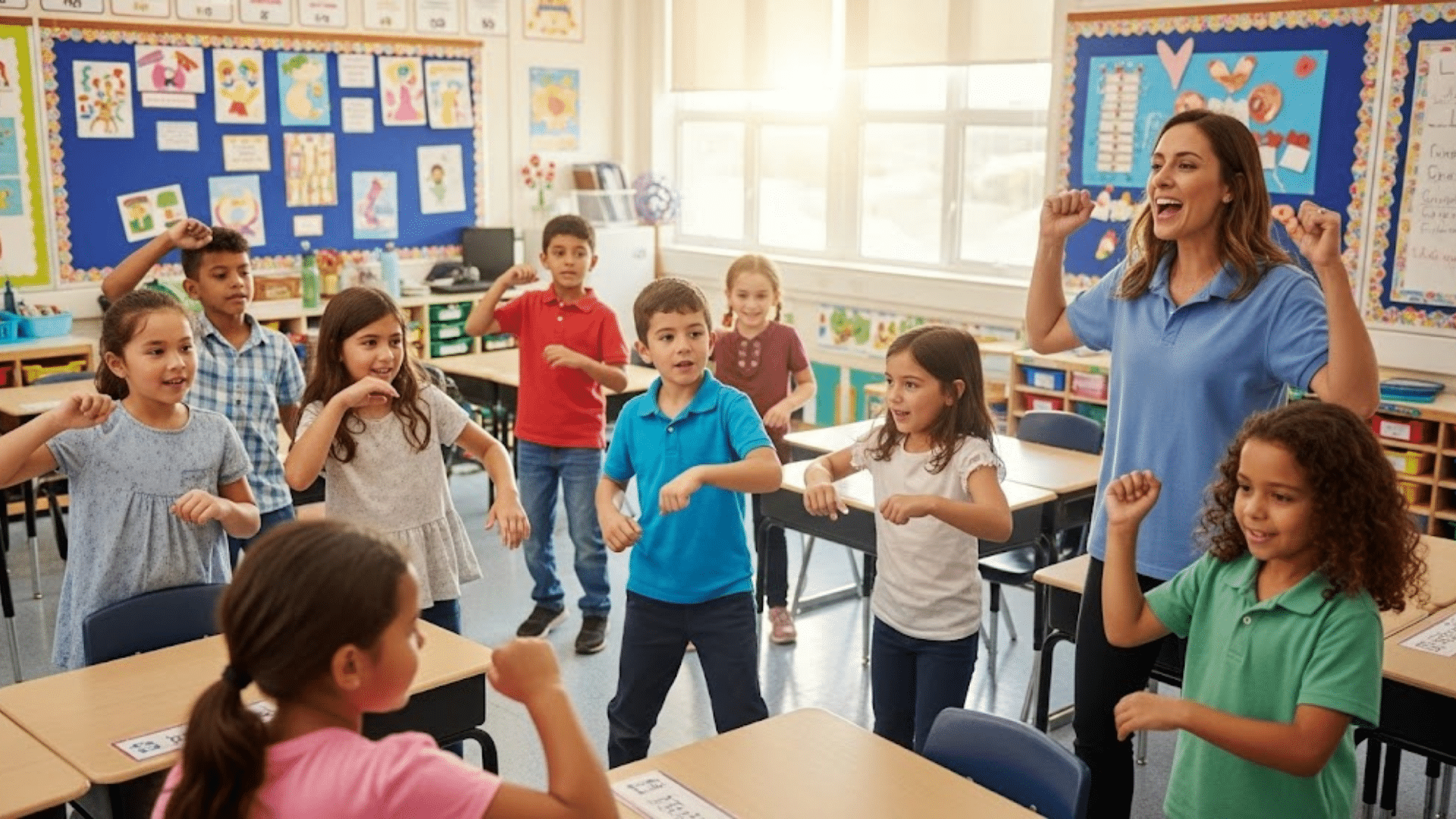
A high-energy, laughter-filled game that encourages expression and interpretation through movement.
- How to do it: One child draws a card with an animal or action and acts it out only by dancing while others guess.
- Why it works: Merges creative movement with social interaction and laughter.
- Scientific Benefit: Amplifies creative thinking, kinesthetic expression, and interpreting body language, which are key to social-cognitive development.
11. Silent Line-Up Challenge
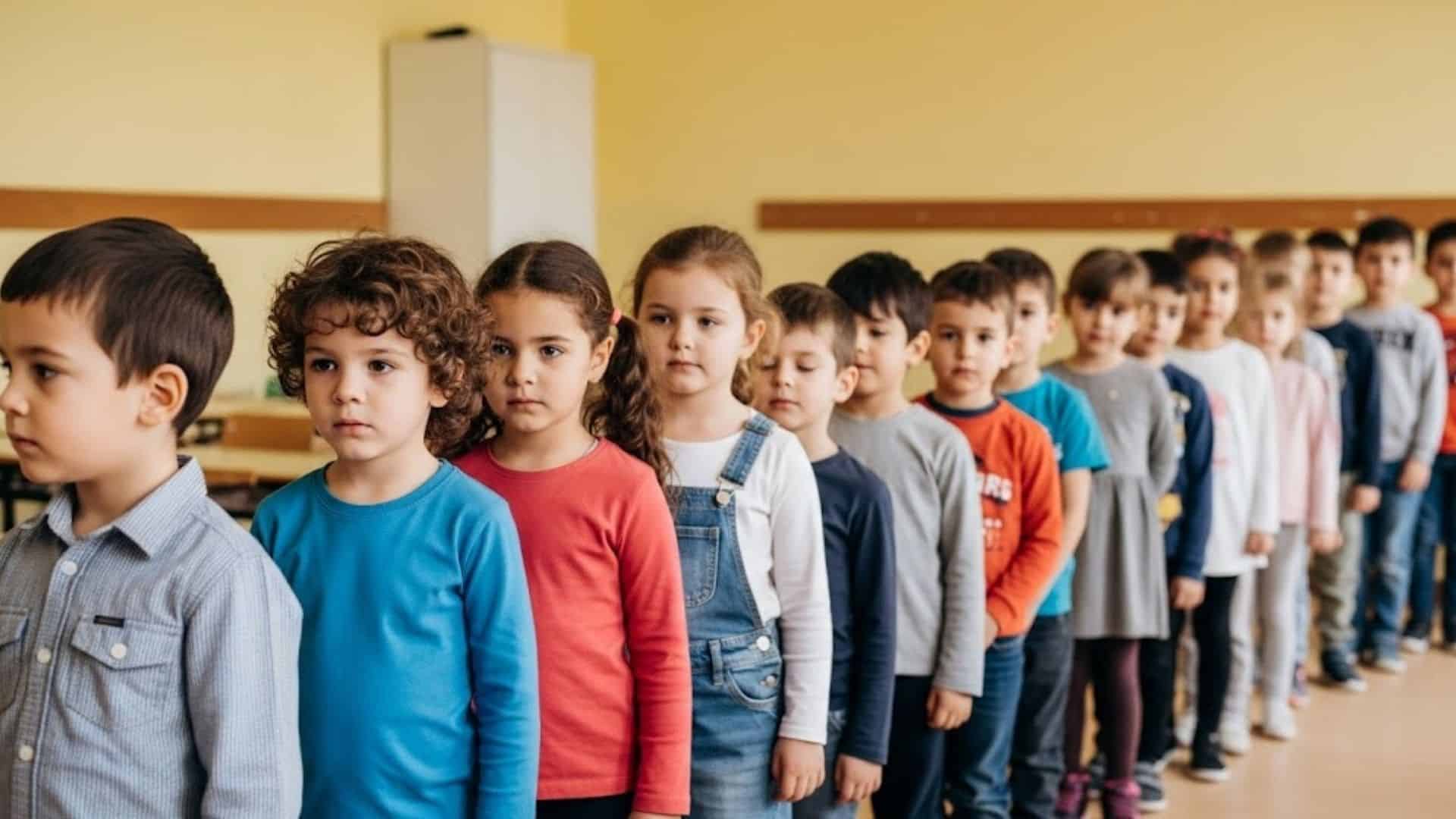
A team challenge that builds communication skills and cooperation without using words.
- How to do it: Ask kids to line up silently by birthday, height, name, etc., without talking. Use gestures only.
- Why it works: Builds teamwork, non-verbal communication, and self-control.
- Scientific Benefit: Improves executive function, especially cognitive flexibility, self-regulation, and collaborative problem-solving.
12. Scavenger Dash
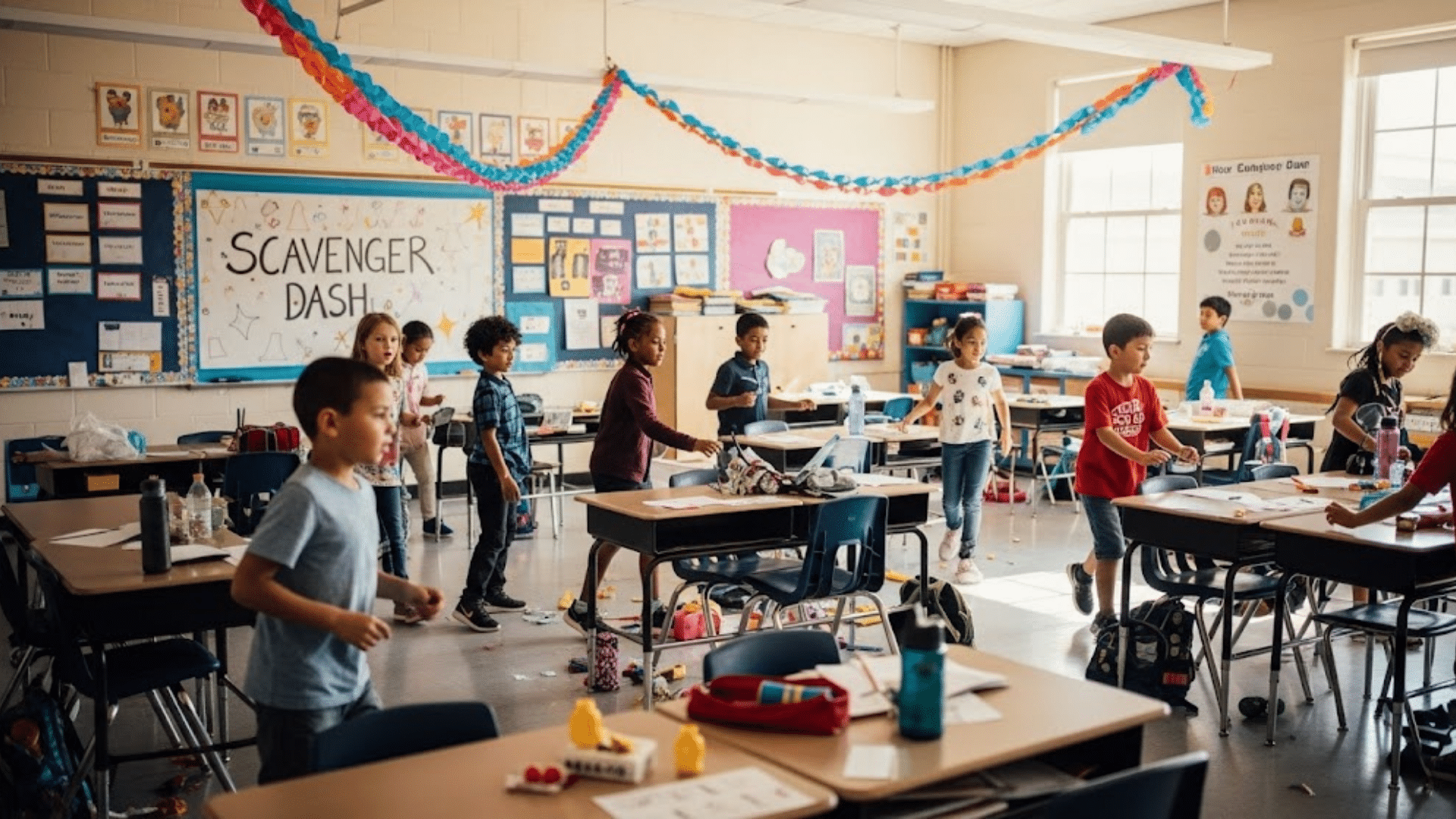
Quick, exciting, and perfect for resetting focus while engaging with the world around you.
- How to do it: Name an item (“something round” or “something soft”), and give kids 30 seconds to find and bring it to you.
- Why it works: Encourages observation, speed, and decision-making.
- Scientific Benefit: Stimulates visual discrimination, working memory, and categorization skills.
13. Shape Your Body
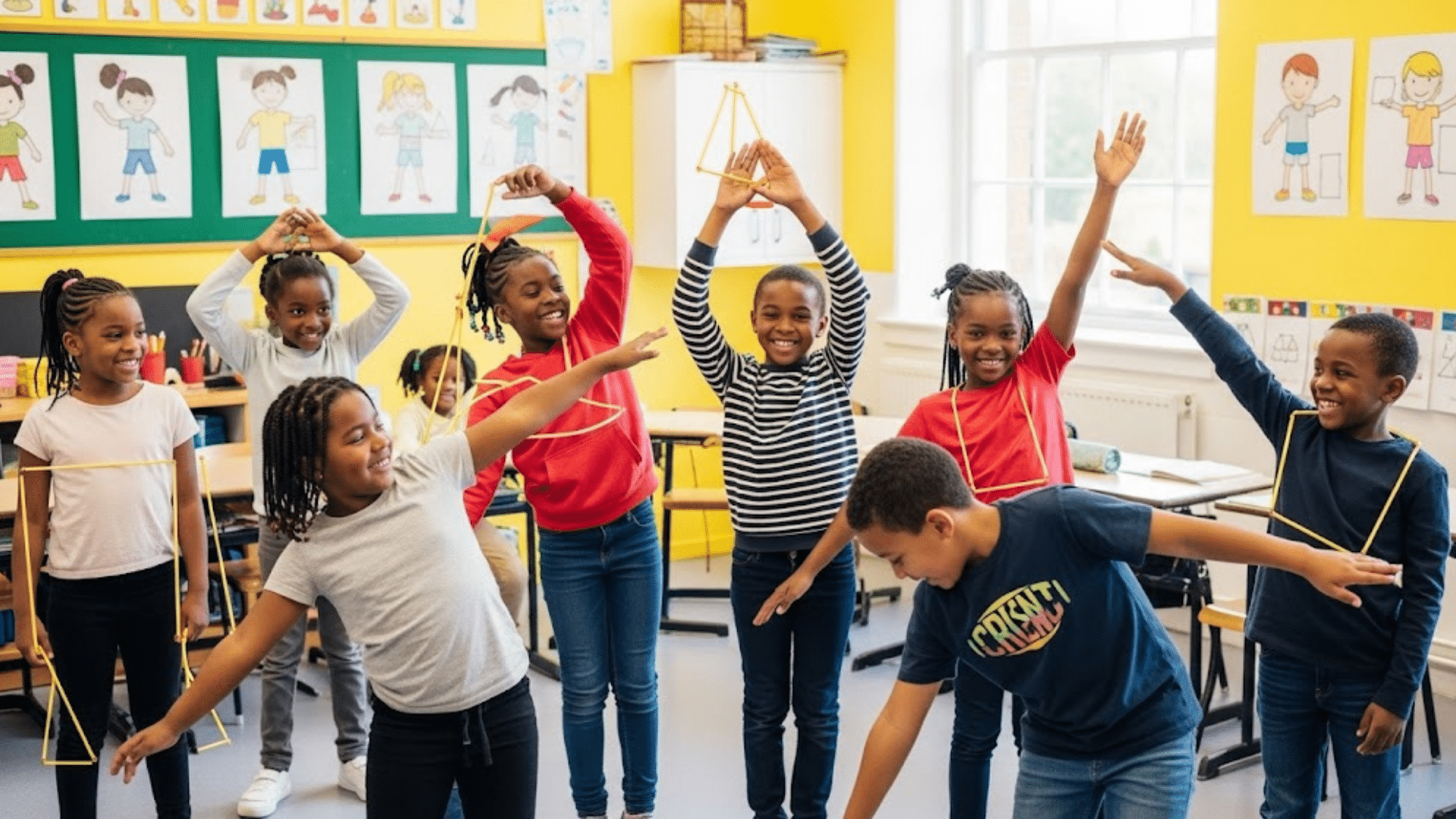
Get creative by connecting body movement to geometry. Great for kinesthetic learners.
- How to do it: Call out a shape (square, triangle, star), and have kids form it using their bodies or working together in small groups.
- Why it works: Blends physical activity with spatial reasoning and teamwork.
- Scientific Benefit: Develops body-spatial intelligence, geometry-based cognition, and group collaboration.
14. Story Stretch
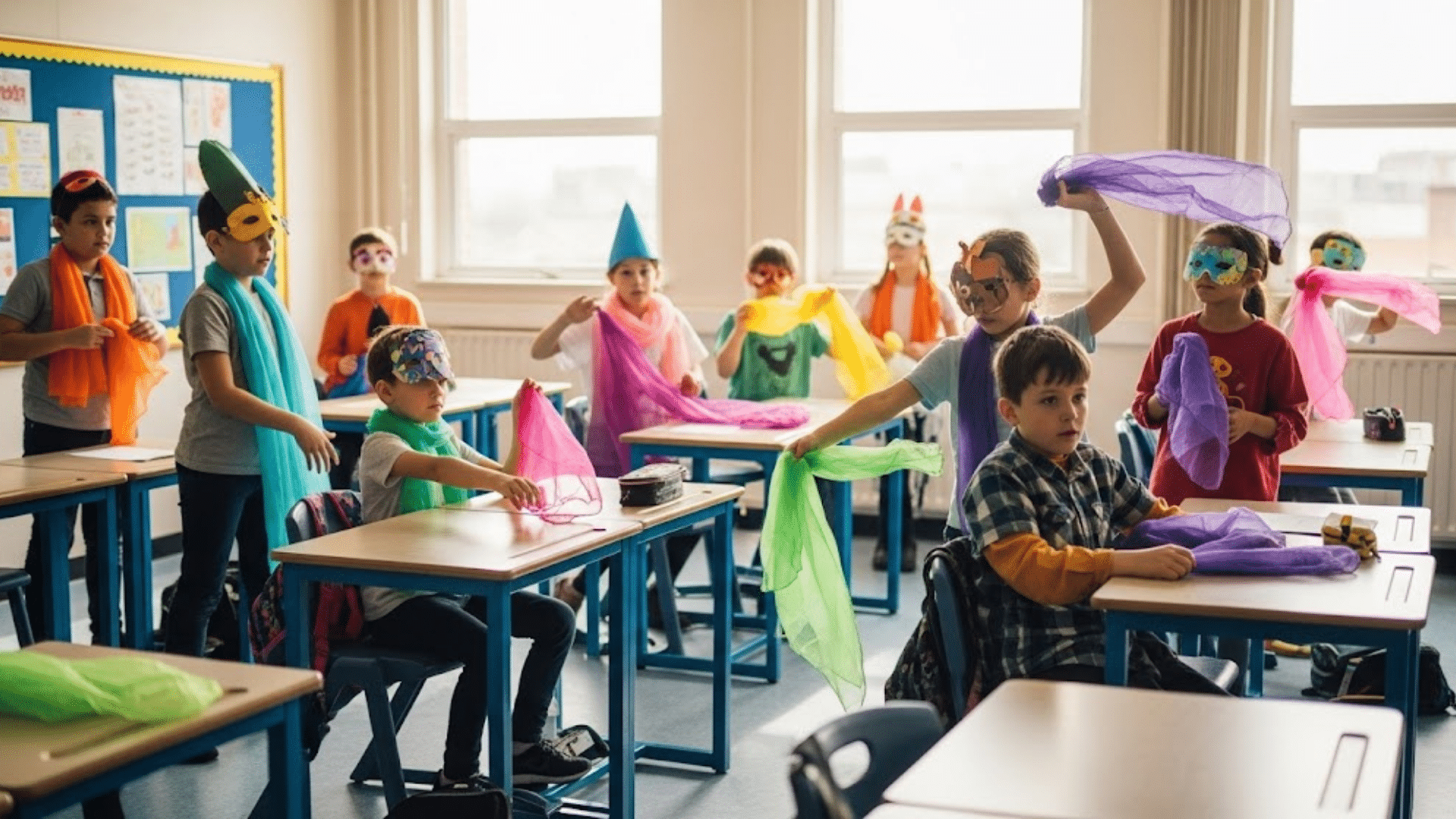
Turn storytelling into a movement break by adding physical cues to story elements.
- How to do it: Tell a short story. Every time you say a keyword (e.g., “tree”), kids do a jumping jack or stretch.
- Why it works: Keeps kids engaged and moving simultaneously, reinforcing memory and attention.
- Scientific Benefit: Boosts narrative comprehension, movement-to-language association, and working memory.
15. Pass the Clap
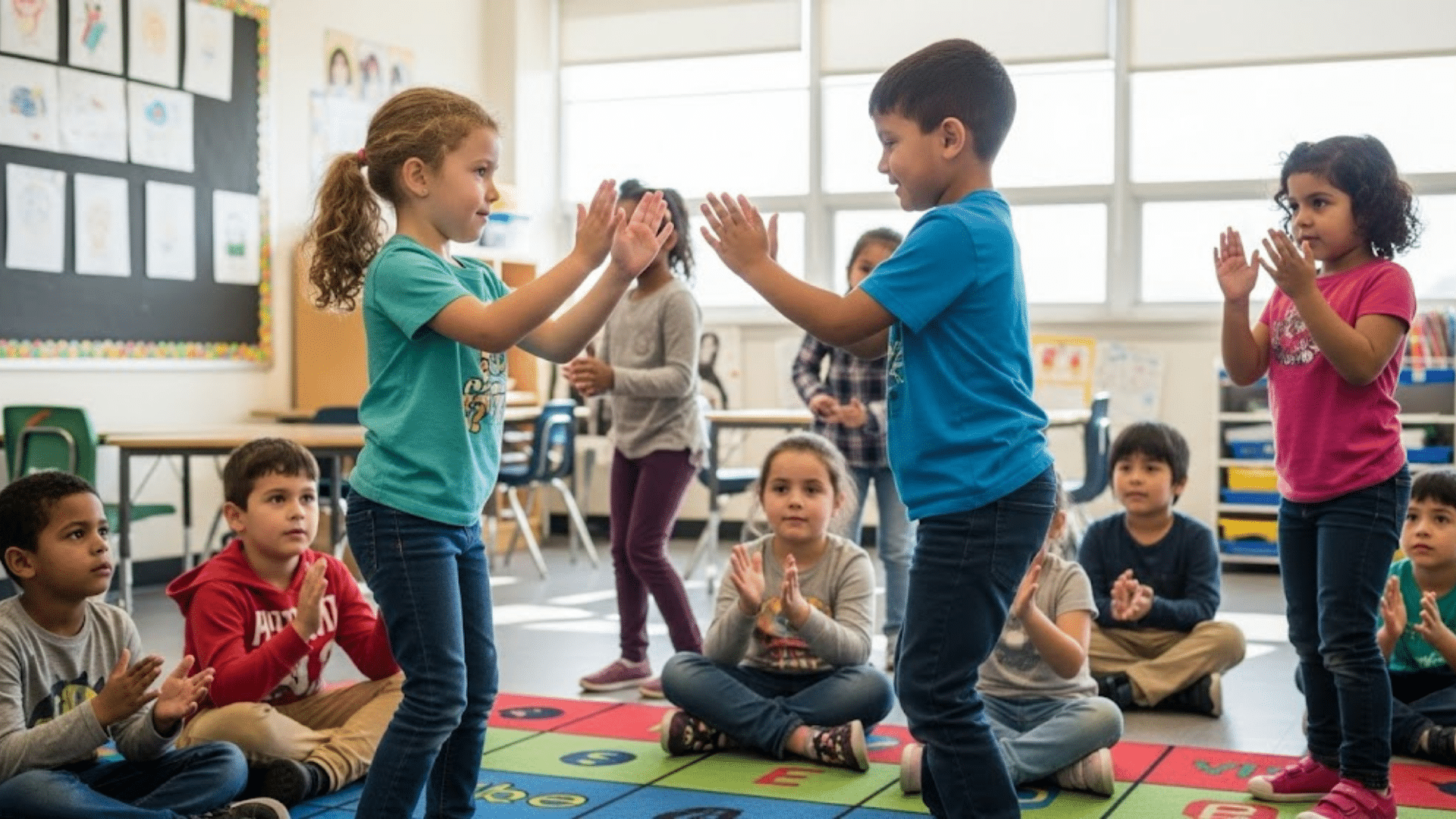
A rhythm-based game that boosts focus and listening without needing space or props.
- How to do it: Stand in a circle. One person starts by clapping once, and then the next continues the pattern. Speed it up for fun!
- Why it works: Sharpens concentration, rhythm, and turn-taking skills.
- Scientific Benefit: Amplifies auditory sequencing, reaction time, and social timing, essential for rhythm and group participation.
16. Jumping Jacks
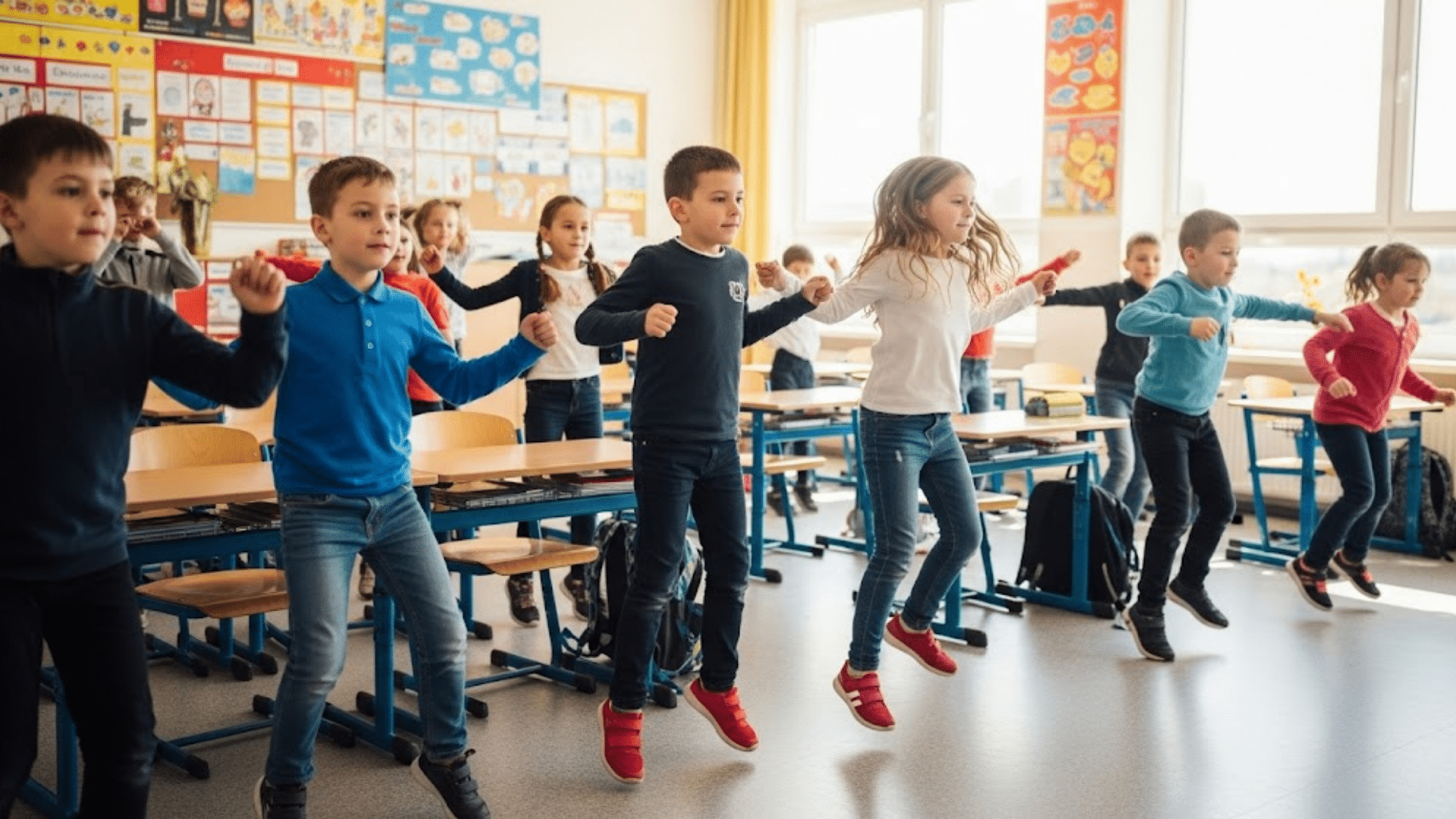
A classic, quick cardio move to boost blood flow and wake up tired minds.
- How to do it: Have kids stand up and do 20 jumping jacks. Adjust the number based on energy level.
- Why it works: It increases heart rate and oxygen to the brain, which helps improve focus.
- Scientific Benefit: Amplifies cardiovascular stimulation, improves dopamine and serotonin release and sharpens cognitive alertness.
17. Spin 5 Times
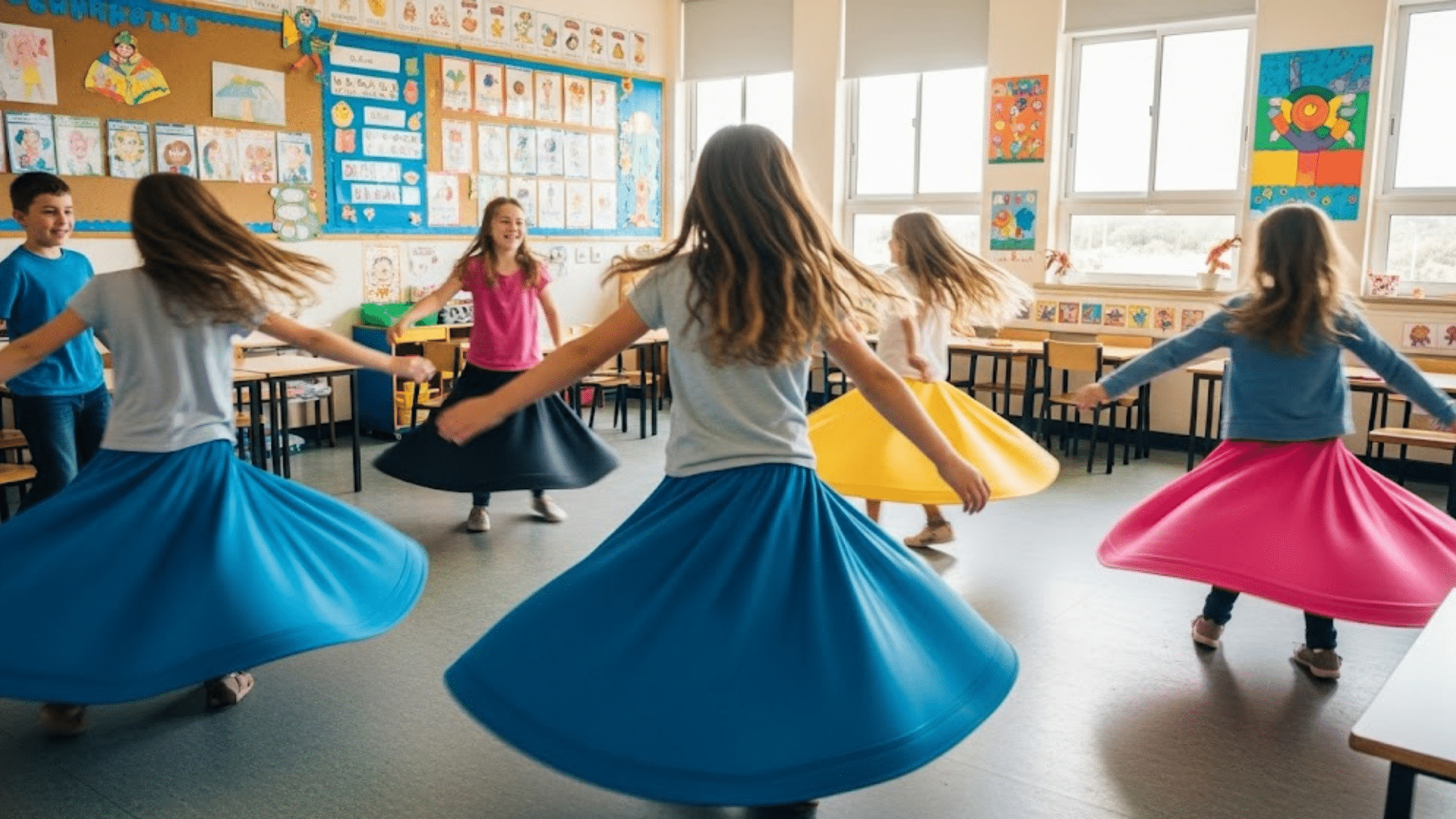
A dizzy and fun movement that gives a sensory reset.
- How to do it: Ask kids to spin in place 5 times, then freeze like a statue.
- Why it works: Activates the vestibular system and provides sensory stimulation.
- Scientific Benefit: Amplifies vestibular processing, supporting balance, spatial orientation, and sensory regulation.
18. Run in Place for 30 Seconds
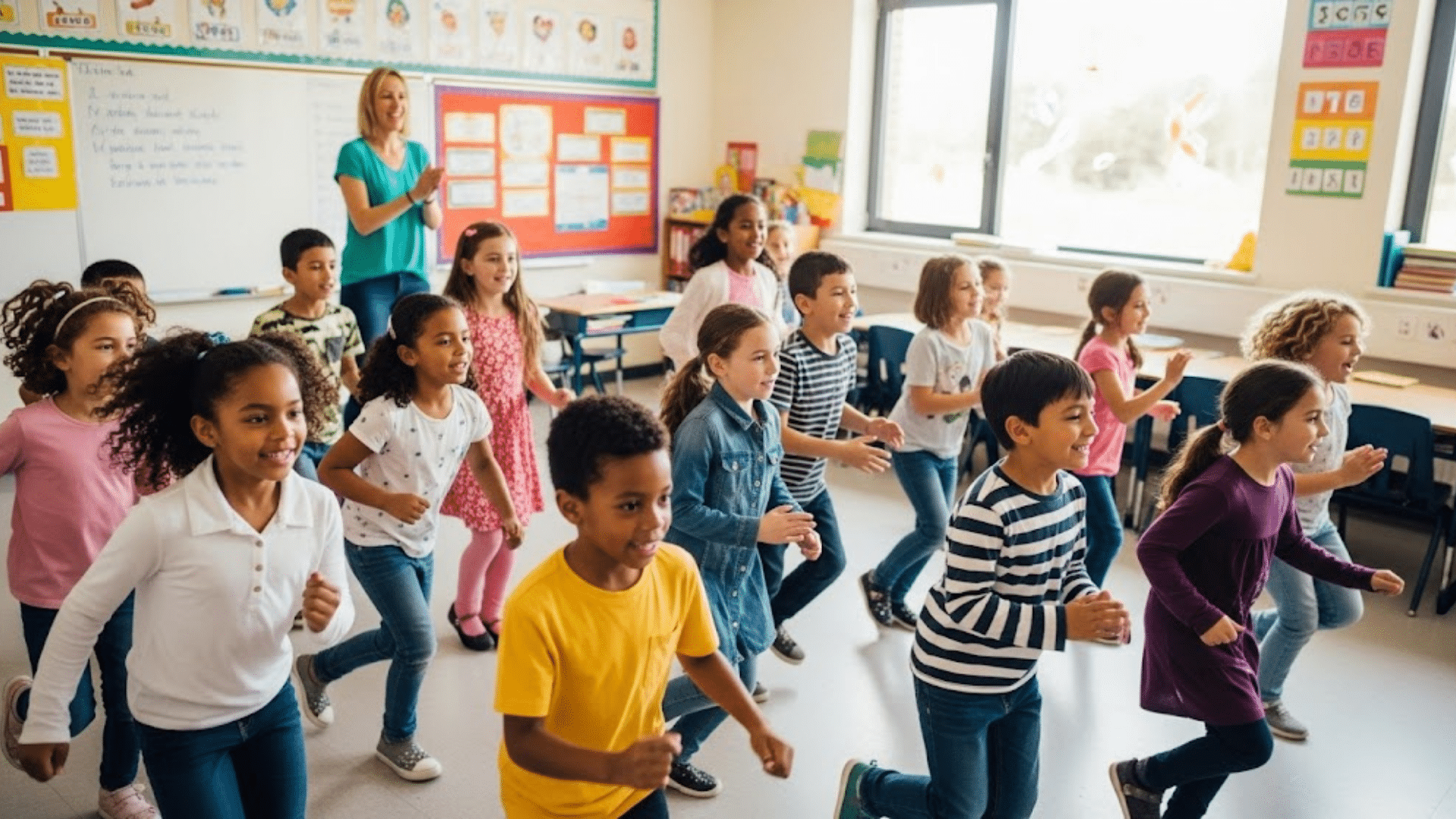
Great for releasing extra energy quickly.
- How to do it: Set a timer and have kids jog or sprint in place. Add a challenge by counting steps or clapping to a beat.
- Why it works: Burns off restlessness and improves alertness.
- Scientific Benefit: Increases aerobic oxygenation to the brain, supporting executive function and attention regulation.
19. Hop on One Foot

A fun balance challenge that gets kids moving and focused.
- How to do it: Ask the kids to hop on one foot for 10 seconds, then switch to the other foot.
- Why it works: Develops balance, coordination, and motor control.
- Scientific Benefit: Amplifies proprioceptive input, builds core stability, and improves neuromuscular control.
20. March Around the Room
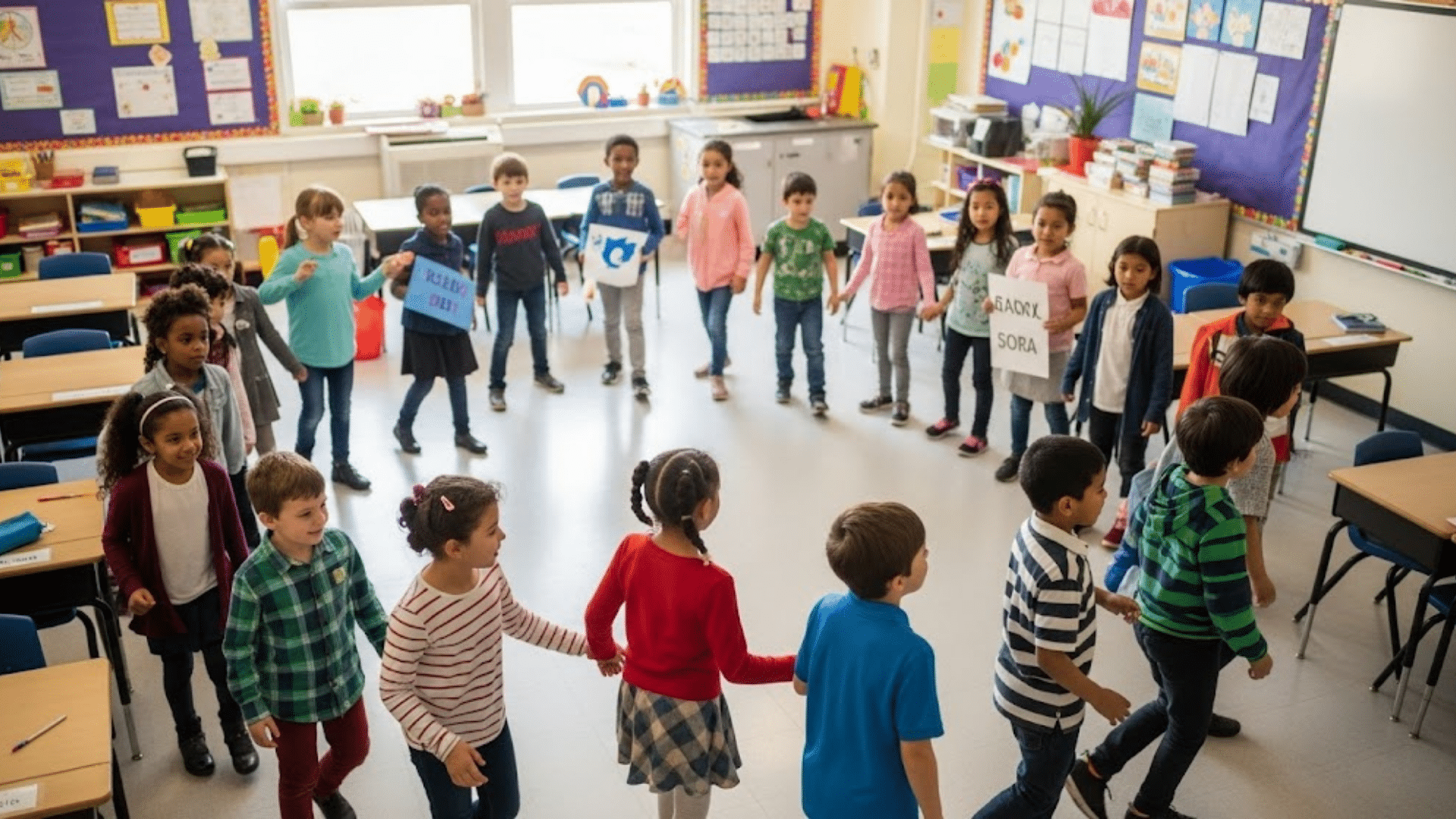
Structured movement with rhythm and direction.
- How to do it: Play marching music and have kids march around the room in a large circle or formation.
- Why it works: Combines structured movement with rhythm and coordination.
- Scientific Benefit: Supports bilateral integration, timing, and spatial patterning, all important for math and reading readiness.
21. Wiggle Everything
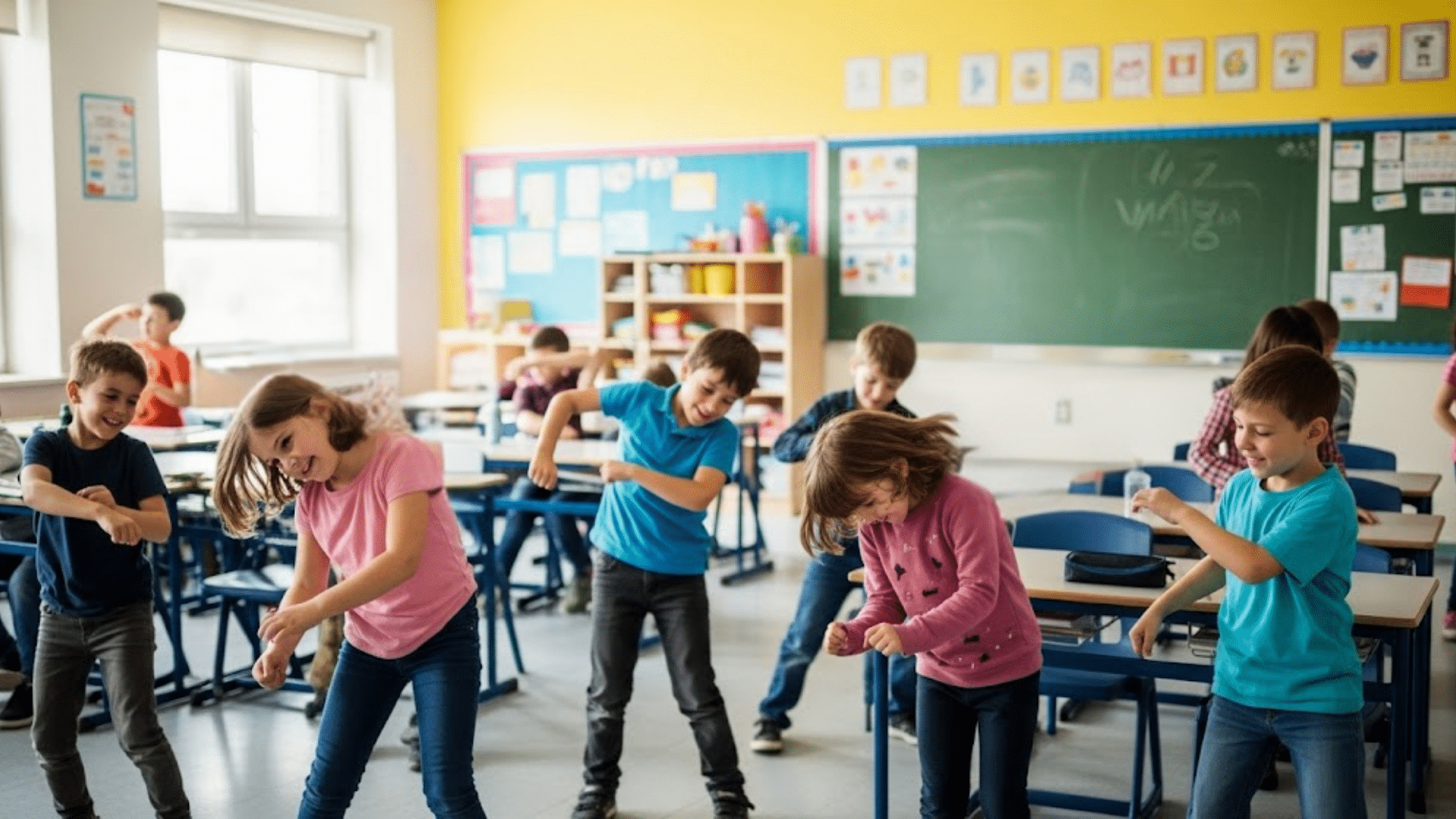
Letting it all go literally! This is a playful, full-body movement break that allows kids to release built-up tension, shake off restlessness, and reset their focus.
- How to do it: Have kids stand and wiggle their arms, legs, shoulders, fingers, everything for 15–30 seconds.
- Why it works: Releases pent-up energy and resets muscle tension.
- Scientific Benefit: Stimulates the musculoskeletal system, Amplifies blood circulation, and provides a regulatory sensory release.
22. High Knees
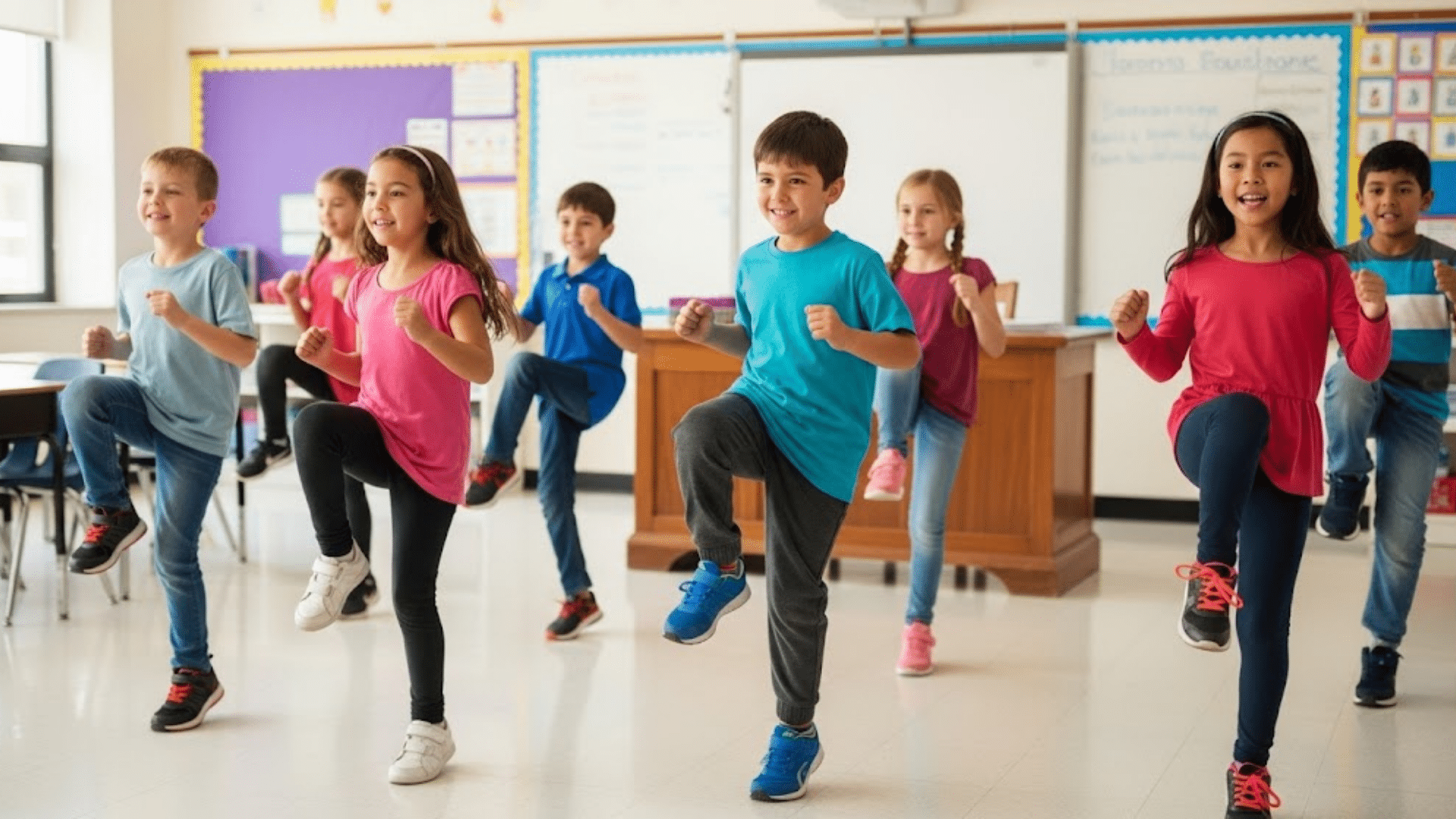
A cardio burst that energizes kids instantly. This is a high-energy movement that gets the heart pumping and the brain fired up.
- How to do it: Ask kids to bring their knees up to their chest while running in place. Do it for 20 seconds.
- Why it works: Elevates heart rate and wakes up sleepy brains.
- Scientific Benefit: Improves coordination, endurance, and brain oxygenation, which boosts focus and cognitive performance.
23. Windmill Arms
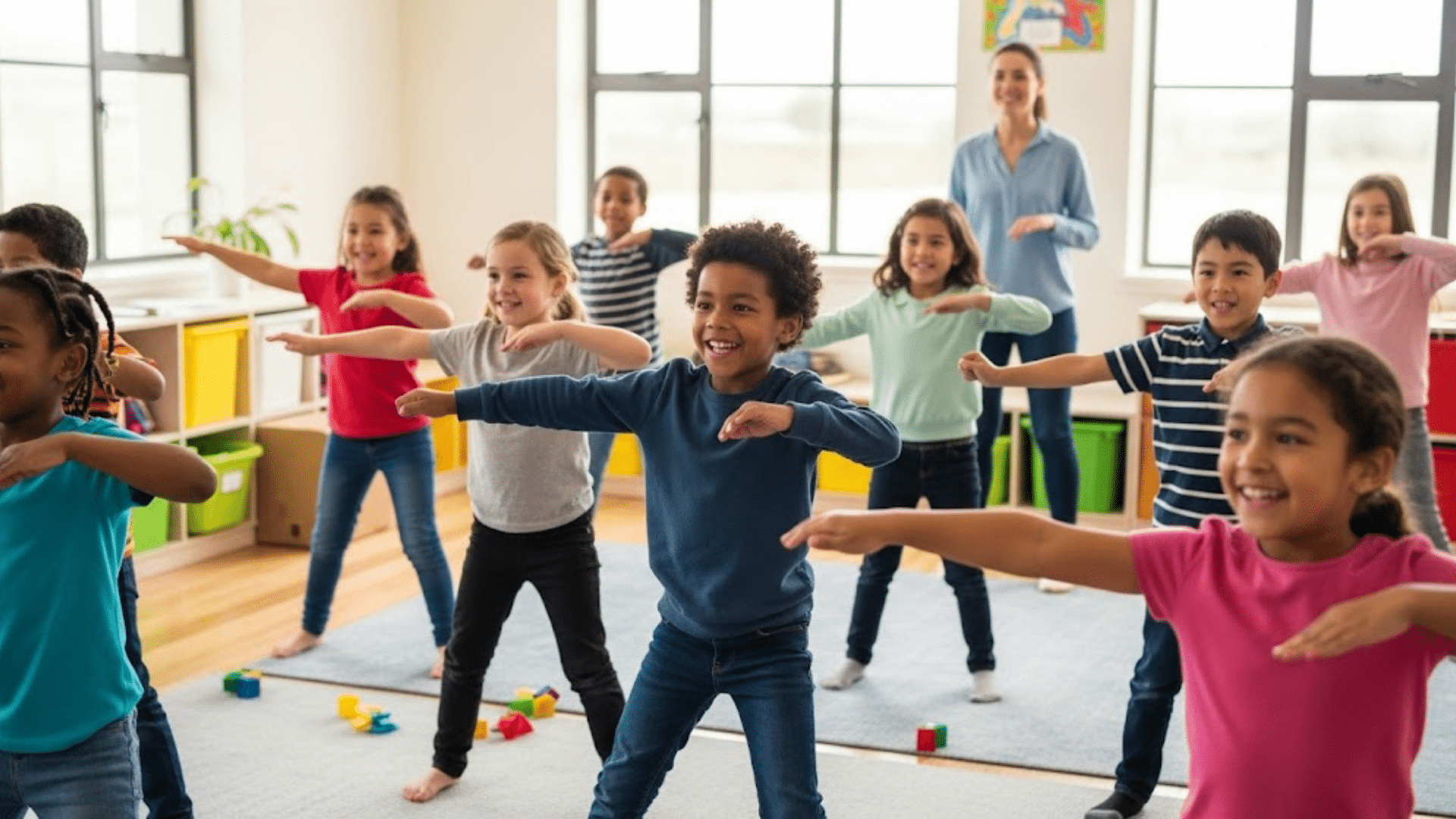
Simple stretching combined with coordination. This activity gently engages the upper body and Amplifies motor control, making it a perfect low-energy brain break.
- How to do it: Kids stand tall and rotate their arms in big windmill circles forward, then backward.
- Why it works: Loosens up muscles and promotes cross-body coordination.
- Scientific Benefit: Encourages cross-lateral movement, helping with left-right brain communication and motor integration.
24. Kangaroo Jumps
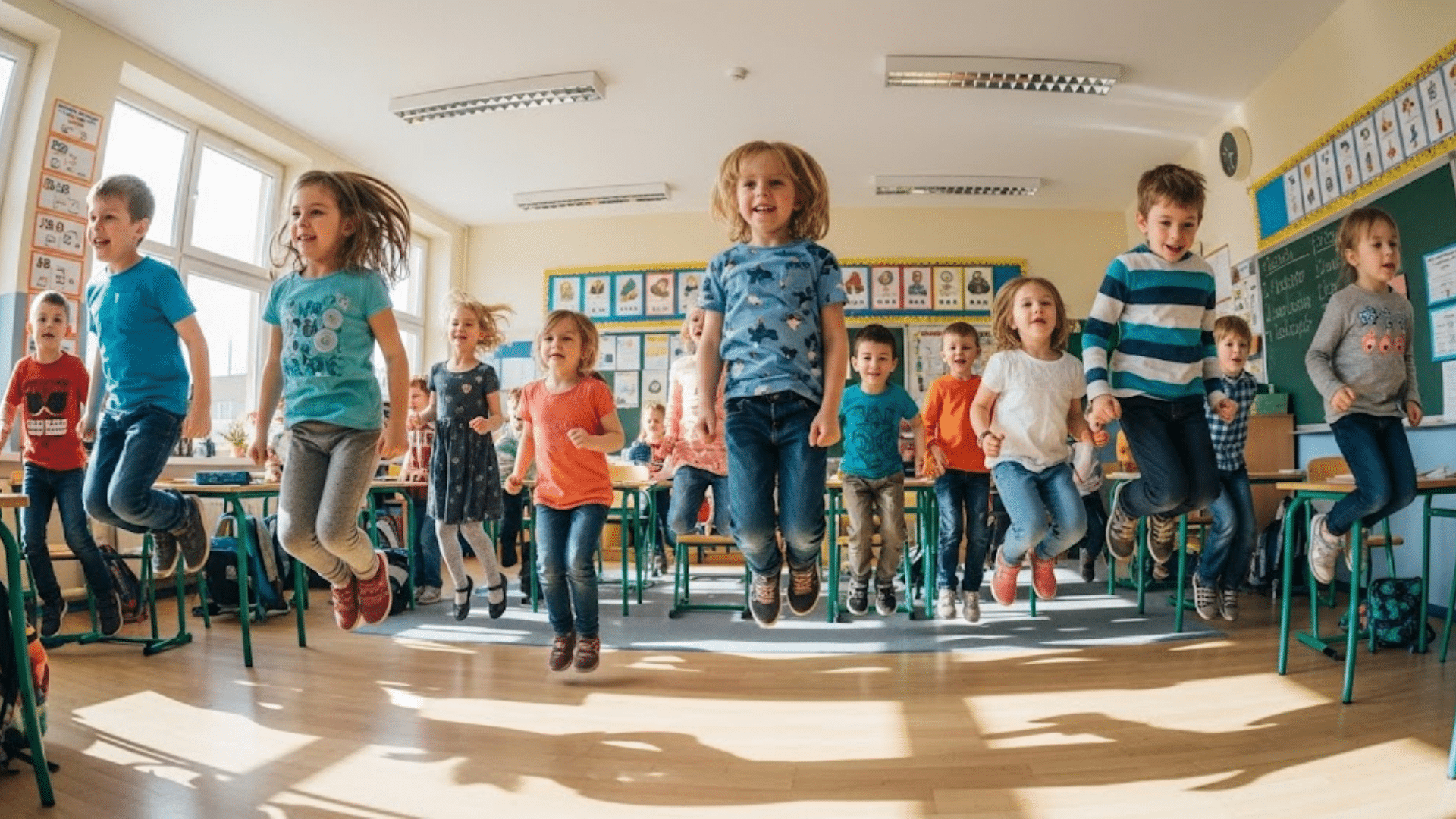
Simple stretching combined with coordination. This is a gentle and rhythmic movement that warms up the upper body and activates cross-body coordination.
- How to do it: Ask kids to crouch and jump forward like kangaroos. Add a fun sound effect!
- Why it works: Promotes gross motor activity and full-body coordination.
- Scientific Benefit: Engages lower-body strength, improves vestibular input, and supports core balance development.
Try These Additional Quick Brain Breaks Anytime
Quick brain breaks are short, simple activities that help kids reset their focus and energy during the day:
25. Touch toes 10 times: A Simple movement to stretch and stimulate circulation.
26. Pretend jump rope: Builds rhythm and coordination without actual equipment.
27. Stretch to the ceiling: This exercise elongates the spine and refreshes posture after sitting.
28. Slow-motion walk: Calms energy and builds focus through intentional movement.
29. Leap like a star: Big, open jumps to shake off sluggishness.
30. Tiptoe around silently: Great for transitions or stealthy, fun movement.
31. Make the silliest face: Releases tension and invites laughter.
32. Talk like a robot: Fun voice variation that encourages expression.
33. Walk like a zombie: A silly gait switch-up that burns off energy.
34. Pretend to be spaghetti: Floppy and fun full-body release.
35. Laugh on purpose: Forces a mood shift and oxygen boost.
36. Say your name backward: Tricky cognitive challenge for focus.
37. Invent a secret handshake: Encourages social bonding and memory.
38. Yawn like a lion: Stretch the mouth and arms wide for a refreshing lift.
39. Act like you’re on the moon: Slow, exaggerated “low-gravity” jumps.
40. Pretend to sneeze dramatically: A Funny, exaggerated action for release.
41. Play air guitar: High-energy pretend play to shake off the blues.
42. Do the chicken dance: Classic silliness that includes full-body movement.
43. Strike a superhero pose: It builds confidence and resets your mindset.
44. Speak in a whisper for 1 minute: A quiet-down strategy to lower noise levels.
45. Act like your favorite animal: Mixes imagination with movement.
46. Take 3 deep breaths: Fast mindfulness reset to recenter the body and mind.
47. Close your eyes and count to 20: A Simple calming activity for quiet focus.
48. Listen to a chime: A sound-based reset for auditory focus.
49. Trace a shape in the air: This activity builds fine motor control and visual tracking skills.
50. Imagine a peaceful place: Visualization that supports emotional regulation.
51. Hug yourself: Self-regulating calming strategy.
52. Rub your hands together and feel the heat: Mindfulness through sensory input.
53. Smile with your eyes closed: A simple way to boost positivity and shift your emotions.
54. Tense and relax your muscles: Progressive relaxation for quick decompression.
55. Repeat a positive affirmation: Supports self-esteem and motivation.
56. Count backward from 20: This exercise engages working memory and attention.
57. Trace your fingers while breathing: Visual and tactile calming technique.
58. Draw a doodle in 30 seconds: Quick creative release to refresh the brain.
59. Pretend to paint a wall: Engage in full-body pretend play with arm movements.
60. Make a silly sound effect: Creative vocal play that boosts mood.
61. Invent a new dance move: Expressive and energizing movement.
62. Mime brushing your teeth: A fun daily routine that mimics motor planning.
63. Air draw your name: Combines movement with visual-spatial awareness.
64. Make a face and freeze it: Mix of expression and impulse control.
65. Pretend to throw confetti: A celebratory motion that adds joy and movement.
66. Act out your favorite hobby: Combining creative thinking with physical play.
67. Rock-paper-scissors: A quick and competitive focus booster for pairs.
68. Pass an invisible ball: Builds imagination and hand-eye coordination.
69. Say “hi” in 5 funny ways: A quick vocal break to lighten the mood.
70. Make a circle and count by 5s: Combining movement with math skills.
71. Stomp and Snap Rhythm Game: Improves coordination and auditory patterning.
72. Partner High-Five Relay: Energizing a Social Movement to Build Teamwork.
73. Group statue challenge: Freeze in silly shapes for impulse control.
74. 10-second dance-off: Burst of full-body fun in a timed challenge.
75. Balance on one foot for 15 seconds: This exercise boosts core strength and stability.
76. 30-second squat hold: Physical strength meets endurance in a quick set.
77. Hold a smile for 1 minute: Mood-boosting trick to release tension.
78. Bunny hops across the room: Simple cardio burst with playful energy.
79. Trace the alphabet with your finger in the air: Gently combining literacy and movement.
How to Use Brain Breaks Effectively
Quick brain breaks work best when they’re short, timed right, and varied. Use them during transitions or when focus fades to help kids reset and stay engaged.
Timing Matters
Take breaks every 10-15 minutes for elementary students and 20-25 minutes for older kids, before attention wanes. Watch for fidgeting or decreased focus as cues.
Keep It Short
Adequate breaks last 2-5 minutes. Use timers to maintain structure and smooth transitions.
Match the Activity
- After mental work: Physical movement like stretching or jumping jacks
- After high energy: Calming activities like deep breathing or mindfulness
- For emotions: Breathing techniques or brief reflection
Simple Options
- Movement: Desk stretches, dancing, walking in place
- Breathing: Box breathing (4 counts in, hold, out, hold)
- Creative: Quick drawing, listening to music, sensory tools
Make It Routine
Build breaks into regular schedules. Teach children to recognize when they need breaks and choose appropriate activities. Create a designated space when possible.
Age Adaptations
Younger children require more physical activity and engaging games. Older kids can handle mindfulness techniques and self-directed breaks.
Brain Break Mistakes to Avoid
The key is consistency and variety in developing self-regulation and maintaining focus.
- Waiting too long: Taking breaks only after children are already overwhelmed instead of before attention starts to fade.
- Taking breaks too long: Extending breaks beyond 5 minutes makes it harder to return to focused work.
- Using screens during breaks: Giving kids tablets or phones instead of activities that truly rest their brains.
- Overstimulating activities: Choosing high-energy games when kids need calming activities, or vice versa.
- Skipping breaks when rushed: Eliminating breaks to “save time” when they’re needed most during busy periods.
Bottom Line
Let’s be honest, and kids aren’t built to sit still for long. Their minds wander, their legs bounce, and their focus slips away.
That’s where quick brain breaks come in. These short, playful moments help kids reset, release energy, and return to learning with a more focused approach. They don’t need to be fancy, just fun and frequent.
A little movement or a silly challenge can shift the whole mood of the room. It’s about giving kids what their brains need.
Tried any of these? Got a go-to move? Comment down below and share your favorite quick brain breaks with others!


